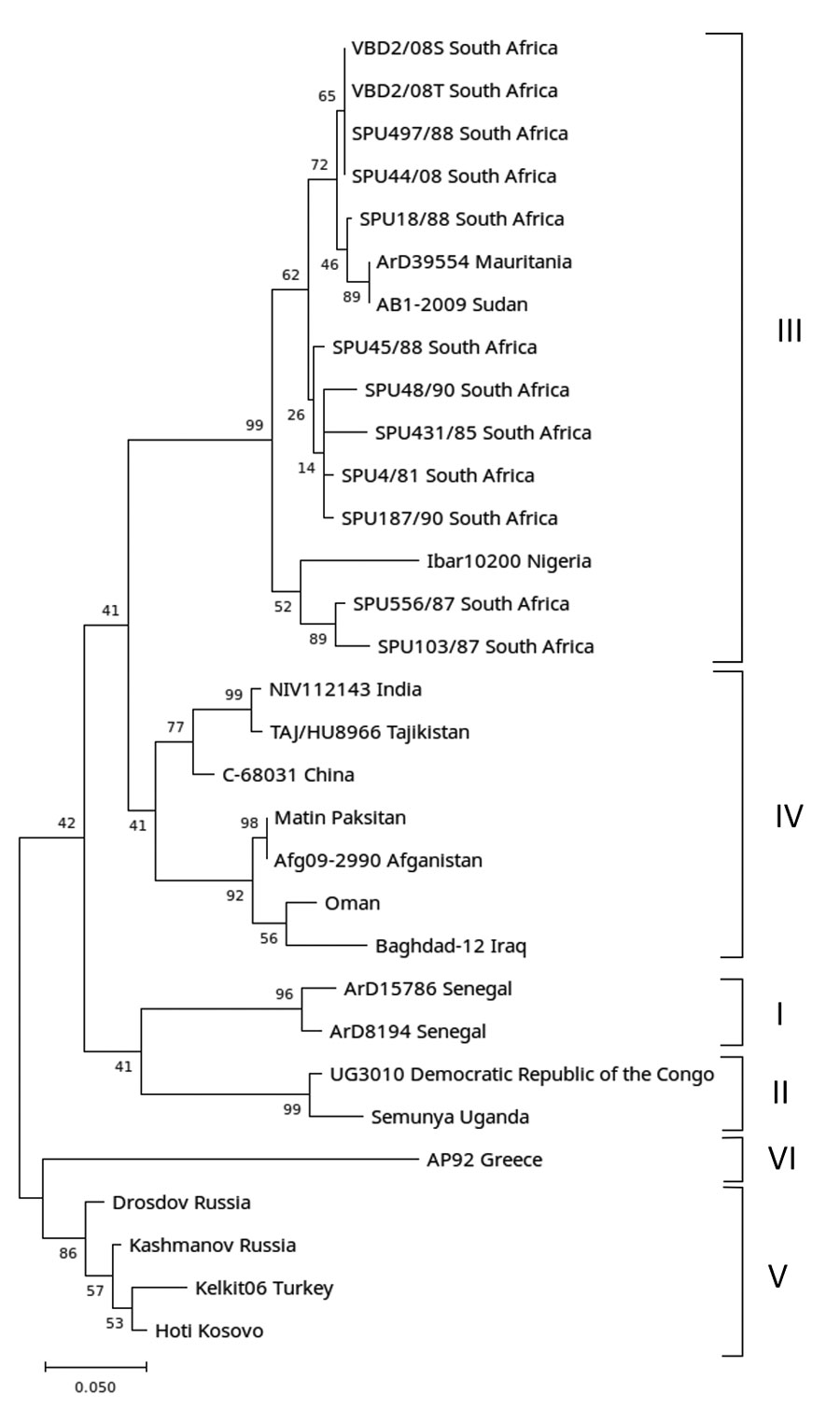Volume 26, Number 2—February 2020
Research Letter
Persistence of Crimean-Congo Hemorrhagic Fever Virus RNA
Figure

Figure. Detection of Crimean-Congo hemorrhagic fever virus (CCHFV) from a retrospectively tested human serum sample that was among those collected during 2008–2011 from acutely ill patients with suspected rickettsial infection, South Africa. Phylogenetic tree was constructed using a 186-bp region of the CCHFV small gene encoding the nucleoprotein sequence. Nucleotide data were obtained in the study for samples designated VBD2/08S (serum-derived), VBD 2/08T (tissue-derived), and retrieved from GenBank for 29 CCHFV isolates from similar, or geographically distinct, regions (GenBank accession number available on request). The tree was constructed using MEGA X (https://www.megasoftware.net) and 1,000 bootstraps. Nodes with values <50 were omitted from the figure. Branch labels are name of isolate and country of origin. Genotypes are indicated at right. Scale bar indicates nucleotide substitutions per site.
1Deceased.
2These authors contributed equally to this article.